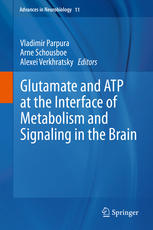
Molecular Structure, Function, and Assembly of the ATP Synthases
Yasuo Kagawa, Shigeo Ohta, Masafumi Yohda, Hajime Hirata, Toshiro Hamamoto (auth.), Sangkot Marzuki (eds.)In recent years, the ATP synthase (H+·ATPase, FoFrATPase) has been the subject of intensive IDvestigations in many laboratories. The major reason for this lies in the fact that this enzyme complex catalyses one of the most important reactions in living cells, namely the synthesis of ATP utilizing the energy from an electrochemical transmembrane H+ gradient, generated by the cellular respiratory chain or by the light reactions of photosynthetic organisms. The mechanism by which the H+ motive force is utilized to drive the synthesis of ATP is one of the major unsolved problems in biochemistry. Thus, the fundamental information concerning the-molecular structure and the mechanism of assembly of the ATP synthase is of major significance in cell biology. A seminar/workshop on the Molecular Structure, Function and Assembly of the ATP synthases was held in April, 1987 at the East·West Center, University of Hawaii, Honolulu, Hawaii, to promote exchange of information between laboratories actively engaged in the study of the A TP synthases, and to provide a forum for discussion and coordination of data derived from molecular, genetic and biochemical approaches used in different laboratories. This volume summarizes the result of the seminar/workshop, in the form of a collection of papers presented at the meeting, and provides an overvIew of current work in this rapidly progressing area of research.
 Amazon
Amazon  Barnes & Noble
Barnes & Noble  Bookshop.org
Bookshop.org  File converter
File converter More search results
More search results More benefits
More benefits 














